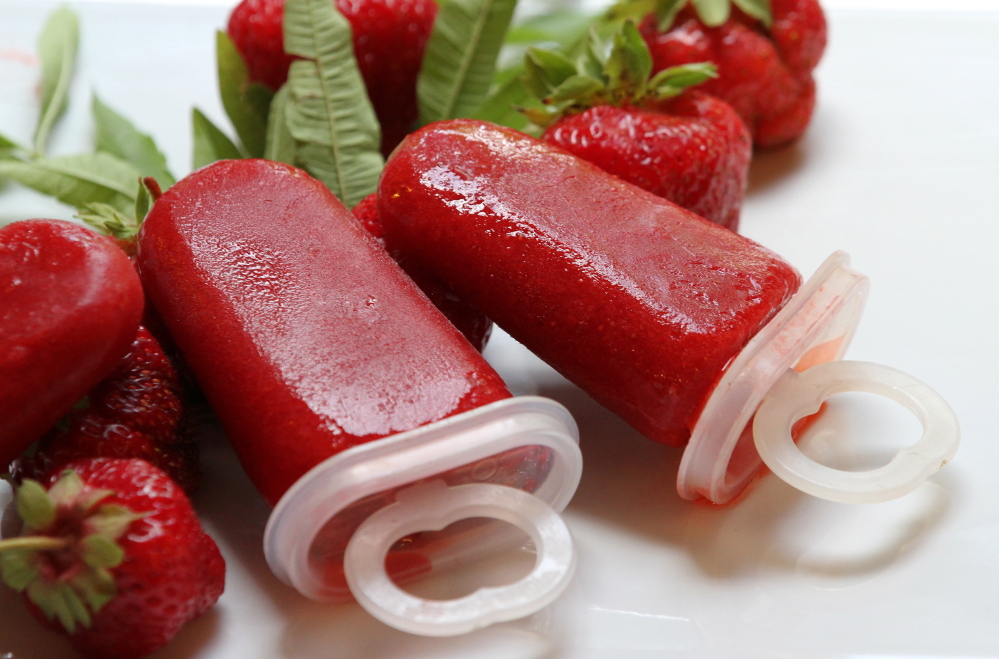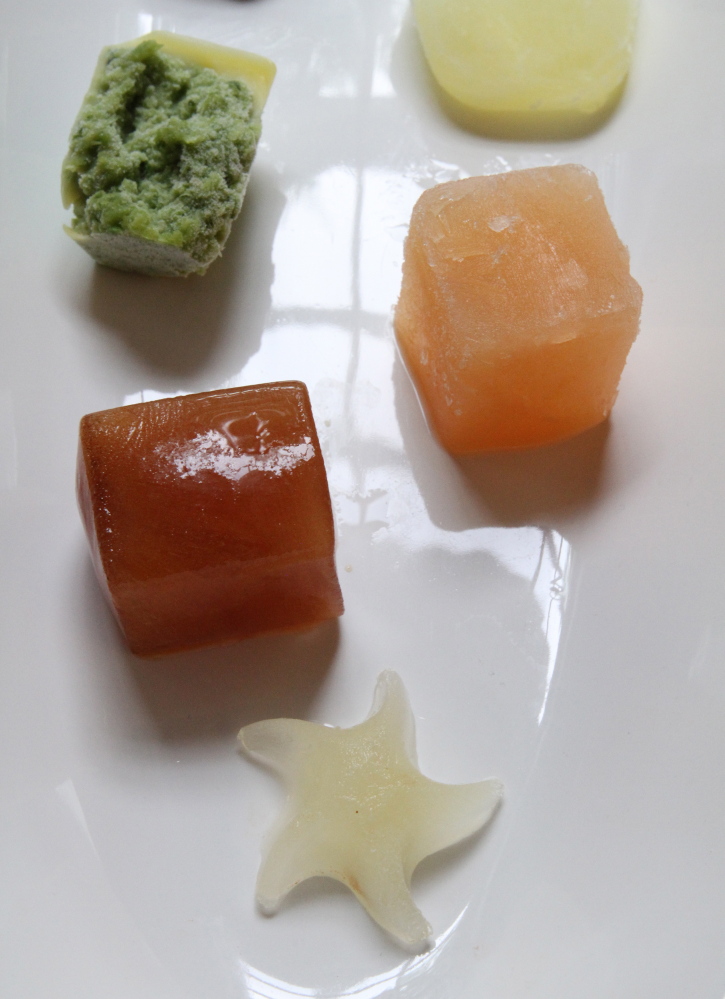My husband once poured a peaty, 10-year-old, single malt scotch over a cube of frozen chicken stock. The combination did not go the way of chocolate and peanut butter, I am afraid.
I contend he should have noticed the difference between cloudy yellowish, iced broth and clear, solid-state water. I considered his point regarding an expectation of plain old ice cubes living in the ice cube tray. I concluded that might be probable in other people’s freezers, but it wasn’t the case in ours.
I freeze most liquid leftovers, both to avoid waste in the moment and enhance flavor in the future. Some of the fun, colorful liquids get turned into popsicles (see recipe), but most are frozen in cubes.
In my freezer right now there are cubes of coffee, tea and buttermilk; of lime zest in water and herbs in oil; of lemon, lime and grapefruit juice; of seafood, chicken, Parmesan, lamb and corn stock; and of egg whites, minced chipotle in adobo, and garlic and arugula pesto.
The process of making frozen tablespoons of flavor (the average ice cube tray forms 16 one-tablespoon rectangles, squares, circles or even stars) is easy. Pour freezable liquids into trays rather than down the drain. Put the trays in the freezer. And once they are solid, store the cubes in labeled bags.
I am diligent about that last part since the Rudalevige Scotch/Chicken Stock Incident, as it not only avoids confusion, but also cuts down on cube evaporation and flavor mingling.
The variety of stainless steel, PBA-free plastic and silicon trays has exploded since DIY baby food cubes and fancy icy floaters in cocktails have become trendy again. I prefer the ones with covers as they prevent spills on the way to the freezer and stack well on the shelves.
The hard part is remembering to use the cubes up in a timely fashion. Like most things that go into the freezer, you want to use frozen cubes of stock, juice and flavorings within three months, but definitely before six have passed. A small white board on the door with a running list of its contents both reminds you what cubes are in there and cuts down on energy expended while you rummage around looking for ones that are not.
Cubes of coffee, tea and juices can keep corresponding iced drinks cold without diluting them. I store those in the ice bin, so if I reach for plain ice, I am reminded that flavored ice is also an option.
The stock cubes get tossed into bowls of packaged ramen my kids make for lunch, added to stir-fries to stop garlic and ginger from burning, and used to deglaze sauté pans for quick weeknight sauces.
The buttermilk and egg whites, once thawed, do exactly what their fresh counterparts are expected to do in baked goods.
And the herbs, chilies and pesto all work well as melting garnishes in chilled soup.
The contents of these cubes may have started off as leftovers, but the time in the freezer repurposes them as perfect finishing touches.
STRAWBERRY-LEMON VERBENA POPSICLES
I inherited my husband’s grandmother’s Tupperware ice pop molds. I use them for this recipe made with local strawberries (the bruised mushy seconds work just fine) and the lemon verbena I planted in my very first herb garden this spring. Lemon verbena is a leafy herb with a woody stalk that provides an earthy, lemony flavor. If you don’t have it, use two crushed lemongrass stalks (white parts only) to flavor the simple syrup.
Makes 8 to 10 popsicles
¼ cup sugar
2 stalks lemongrass or 2 to 3 lemon verbena sprigs
1 quart fresh strawberries
Place 1/2 cup water and the sugar in a small pan over medium heat. Stir until the sugar has dissolved.
Muddle either the lemongrass or the lemon verbena a bit to release their oils and add them to the pan of sugar syrup. Steep until the mixture is cooled to room temperature, about 45 minutes.
Remove the herbs once the syrup has cooled.
Wash and hull the strawberries and place them in a blender. Add the lemony simple syrup. Blend the mixture until smooth.
Pour into popsicle molds. Place in the freezer for 12 hours.
Christine Burns Rudalevige is a food writer, recipe developer and tester and cooking teacher in Brunswick. She writes about feeding her family Maine seafood at www.familyfish.net. Contact her at:
cburns1227@gmail.com
Copy the Story LinkSend questions/comments to the editors.




Success. Please wait for the page to reload. If the page does not reload within 5 seconds, please refresh the page.
Enter your email and password to access comments.
Hi, to comment on stories you must . This profile is in addition to your subscription and website login.
Already have a commenting profile? .
Invalid username/password.
Please check your email to confirm and complete your registration.
Only subscribers are eligible to post comments. Please subscribe or login first for digital access. Here’s why.
Use the form below to reset your password. When you've submitted your account email, we will send an email with a reset code.